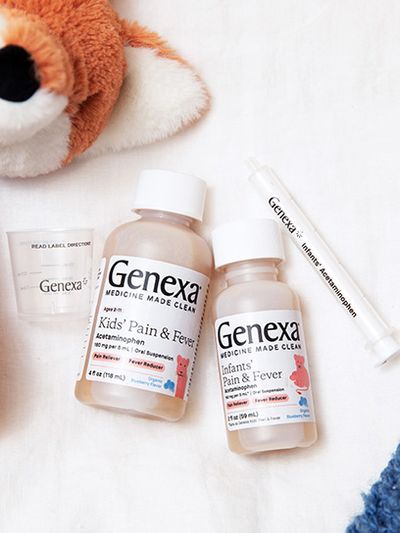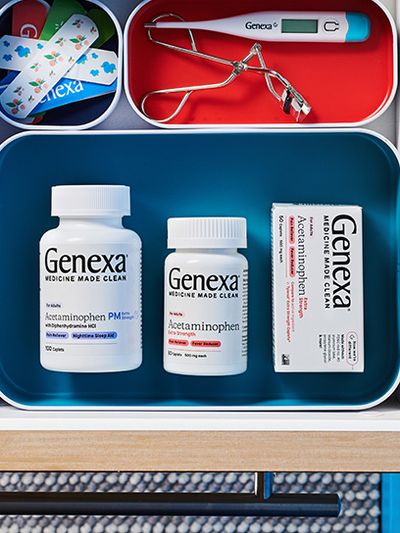Nasal Saline: What Is It?
Understanding Saline Nasal Treatments
Table of contents:
Saline solution is water with salt dissolved into it, with the most commonly used type of salt being regular table salt. Compared to regular water, saline solution has high concentrations of salt, and different types of saline solution may have different salt concentrations.
There are many types of nasal products that incorporate saline solution in order to bring you relief from common symptoms like congestion, a runny nose, and sneezing, which often occur as the result of allergies or a cold.
Using nasal saline solution may work to:
- Help remove crusts, secretions, pollen, allergens, and germs from the nasal passages
- Shrink the mucus membranes in your nose, which may help improve nasal ventilation and drainage
- Help move mucus through and out of your nasal passages and sinus cavities
- Keep your nasal passages moist, which might help soothe irritation
Because nasal saline solution has no long-term side effects, it is considered to be a very safe way to find relief from some of the most common, yet uncomfortable, symptoms affecting the nasal passages.
Saline solution does not contain any drugs or medication, which means it does not pose the same risk of side effects as other medicines that treat allergies or a cold. If the symptoms you are experiencing are primarily affecting your nose as opposed to your eyes or throat, saline solution may be a great way to soothe your discomfort.
Nasal saline solution products are also safe to use alongside other forms of medicine, which means they may be able to bring you added relief if you are already using antihistamines or cold medicines. Nasal saline products are very safe for use by most patients, but making sure you are using your product correctly is a key part of achieving your desired results.
What Does Nasal Saline Do? How Can It Be Used?
Saline solution is available in several different forms, including sprays, drops, and washes, and they can be used to help clear your nasal passages of dried or thick mucus in the nose.
If you deal with seasonal allergies, your body can overproduce mucus when you come into contact with an allergen, and this occurs because your immune system overreacts to the allergen.
When you are exposed to an allergen, your body produces a chemical called histamine, and this chemical is what ultimately causes your allergy symptoms. When mucus builds up in your sinuses and nasal passages, it can worsen your congestion and runny nose, and saline solution may help your body get rid of the excess mucus.
Saline solution can also help improve the functioning of cilia in your nose. Cilia are tiny hair-like projections that line the inside of your nose, and they work to keep allergens, irritants, and germs away. Improved functioning of your cilia may help prevent the spread of bacteria or irritants to your sinuses, and it may also help reduce symptoms of postnasal drip.
More generally, saline solution can help keep your nasal passages moist, and if you find that your symptoms become worse when you are in dry air conditions, saline may help make you more comfortable.
Saline solution is available over the counter, which means you can purchase it without needing a doctor’s prescription.
However, if your symptoms are particularly severe or concerning, it is always best to speak with your doctor before attempting to self-treat using saline. Severe symptoms may be a sign of an infection, like a sinus infection, that may require prescription antibiotics.
How To Use Nasal Saline for the Best Results
Proper usage of nasal saline products is key to getting the results you want, and while saline is a very straightforward product, there are still some tips and tricks that may help you use your saline correctly.
Positioning the saline spray correctly, for example, is one of the most important parts of allowing the saline to do its job. When you are using your saline, you should aim the solution towards the back of your head rather than straight up towards the top of your head.
Ideally, the solution will travel up and into your nasal passages instead of going right down the back of your throat or dripping back out of your nose. Minimal dripping of the solution may be normal, but if you feel all of it dripping out, this may be a sign that you are having trouble aiming the solution properly.
Gently blowing your nose prior to using nasal saline may help clear the way for the solution, allowing it to more deeply enter your nasal passages in order to get rid of mucus. If your nose is completely backed up to the point where you can barely breathe through your nose, chances are that the saline will not be able to sufficiently enter your nasal passages to do its job. If your congestion is this severe, you should talk to your doctor to find the best treatment method.
You should always make sure to read the directions on the specific saline product that you are using. Some saline products need to be shaken before you use them for the first time, and other products may instruct you to dispense a little bit of the solution before spraying it into your nose.
You should always clean off the nozzle or tip of the dispenser after each use in order to prevent bacteria from building up or germs from spreading. Do not allow anyone else to use the same saline product as you, because this could spread germs from person to person.
If you are using saline properly and are not experiencing any improvements in your symptoms, or if your symptoms are becoming worse in spite of treatment, you should talk to your doctor. This may indicate that your nasal symptoms are being caused by an infection that requires further forms of medication, such as prescription medication.
Consulting your doctor will allow you to begin the proper method of treatment more quickly in order to find effective relief.
Tips To Maximize the Benefits
Ask your doctor or pharmacist how long you should expect it to take before you begin seeing results. That way you can recognize whether the spray is ineffective or whether you have not been using it for long enough.
In some cases, it may take a week or so for you to begin seeing results, and patience and consistent use of your saline spray are key.
The most common side effect associated with nasal saline is a slight burning sensation in the nose. If you begin to experience this side effect, your doctor may recommend that you stop using your spray for a day or two.
However, this sensation is generally mild and may not require you to stop using the solution unless it is making you very uncomfortable.
If you begin to experience nosebleeds or nose pain, you should again describe your symptoms to your doctor and follow their advice.
When you are choosing a saline product, there are many different types of saline solution available. The wide variety of products may make it difficult to know what to choose, and an important factor to keep in mind is that some saline sprays may have added active ingredients.
Always check ingredient lists and choose saline products that only contain pure saline with minimal inactive ingredients, and which are free of artificial inactive ingredients. Saline sprays containing decongestant drugs can cause rebound congestion if used for more than three days.
Anytime you have questions or concerns, you should speak with your doctor for professional guidance.
The Bottom Line
Nasal saline is an easy and effective way to find relief from common nasal symptoms, such as congestion, a runny nose, or sneezing, and saline solution is a more natural option than conventional decongestants. Saline solution is made of water with salts dissolved into it, with the most commonly used type of salt being regular table salt.
Saline solution can help keep your nasal passages moist while also working to thin and loosen mucus in the nose, and it can also help flush away allergens, germs, and other irritants from your nasal passages.
When using a nasal saline solution, you should aim the product toward the back of your head in order to make sure that it fully enters your nasal passages instead of dripping back out or down your throat.






